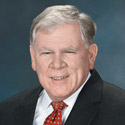Tomorrow Needs a Plan Today
The need for analysis and planning is everywhere you look April/May 2016 My wife and I live in a private housing community in Northeast Pennsylvania, and I am a member of its board of directors. After the homeowners’ association incurred significant costs to fix a valve on our dam, our cash reserves were very low and our board wanted to know how large our reserve funds should be. In order to have some credibility with our members, we decided to engage a consulting firm that specializes in reserve studies for homeowners’ associations like ours. Our goal was to determine how much would be needed to maintain our capital assets over a 40-year period. The consulting firm presented a report that showed the need for a much larger reserve fund, and the board decided to raise dues to build adequate reserves for the long run.
My wife and I live in a private housing community in Northeast Pennsylvania, and I am a member of its board of directors. After the homeowners’ association incurred significant costs to fix a valve on our dam, our cash reserves were very low and our board wanted to know how large our reserve funds should be. In order to have some credibility with our members, we decided to engage a consulting firm that specializes in reserve studies for homeowners’ associations like ours. Our goal was to determine how much would be needed to maintain our capital assets over a 40-year period. The consulting firm presented a report that showed the need for a much larger reserve fund, and the board decided to raise dues to build adequate reserves for the long run.
Less than a month later, the members of our association met to vote on the budget, which included a dues increase of more than 40 percent. After a presentation by our consulting firm, followed by comments and questions from members, the new budget was passed by a wide margin. Despite the successful passage of the new budget, most members did not attend the meeting and did not understand and agree with the board’s actions; only 15 percent of the membership heard the presentation and voted on the budget. Our educational campaign was a big success with those at the meeting, but it did not reach the majority who did not attend the meeting, many of whom remain convinced that our decision was not the right one.
Despite our community’s small size and private nature, this episode illustrates some of the key problems of public finance. Beyond the annual give-and-take in the negotiation of the current year budget, governments need to look into the future, identify needs and plan for revenues to meet those needs. The first task is to identify what types of future expenditures need to be made. The second is to estimate the cost and timing of each of those expenditures. Finally, the sources of funds to support the expenditures must be identified and matched in amount and timing. Unfortunately, analysis is only the first step. Citizens must be educated, and the winners and losers must struggle to find a compromise.
The need for such analysis and planning is everywhere you look. Roads, water systems and electrical grids must be built, maintained and replaced. Pensions and retiree medical coverage for government workers are long-term obligations. Mandated programs providing income and health care for low-income residents must fit in state and federal budgets, this year and into the future. Some of these long-term problems are being monitored and analyzed, but many are not.
In this issue of The Actuary, we are fortunate to have a two-part analysis of a very large problem that is just around the corner in the United States. Sometime in the mid-2030s, Social Security will not have sufficient income to pay all scheduled benefits. Stephen Goss, the chief actuary for the U.S. Social Security Administration, outlines the long-term outlook of the OASDI (Old-Age, Survivor and Disability Insurance) system: how the problem developed and what the future would be without any changes. Our second article on Social Security provides a menu of options for dealing with the crisis, including changes to the benefits and increases in taxation. The author, Karen Glenn, is the acting deputy chief actuary for the U.S. Social Security Administration.
Awareness of Social Security and the retiree medical insurance program, Medicare, is widespread in the United States. Less well-known is a part of the Medicare program, Medicare Advantage (MA). Total Medicare spending was projected to be in excess of US$600 billion for the fiscal year that just ended; the spending for MA participants was about a quarter of the total, while the number of MA participants was 31 percent of total Medicare participants. Brad Piper and Julia Friedman of Milliman have written an article about Medicare Advantage repayment rates and how the providers are coping with the reductions in such rates under the Affordable Care Act. Given the size of the Medicare program and MA’s potential for controlling costs, this article provides some interesting information for consideration.
Some of our colleagues are working professionally to analyze the future and provide guidance to government programs. But most of us will become involved as workers and employers who may need to pay increased taxes, and as retirees who may have their benefits reduced. Our children, grandchildren and future generations will be affected by the decisions that will be made.
What can we do? In the case of Social Security, the pending shortfall will become a very large and contentious issue, as the winners and losers fight to maintain their positions. We can become involved by understanding the key factors causing the crisis and the options available to meet it. Then, we can spread the word, by writing or speaking, by informing the voters and their representatives. The key will be sticking to the facts and avoiding personal opinions (if that is possible). We can help prepare the ground so that when the eventual political battles begin, the combatants will at least be speaking the same language.

